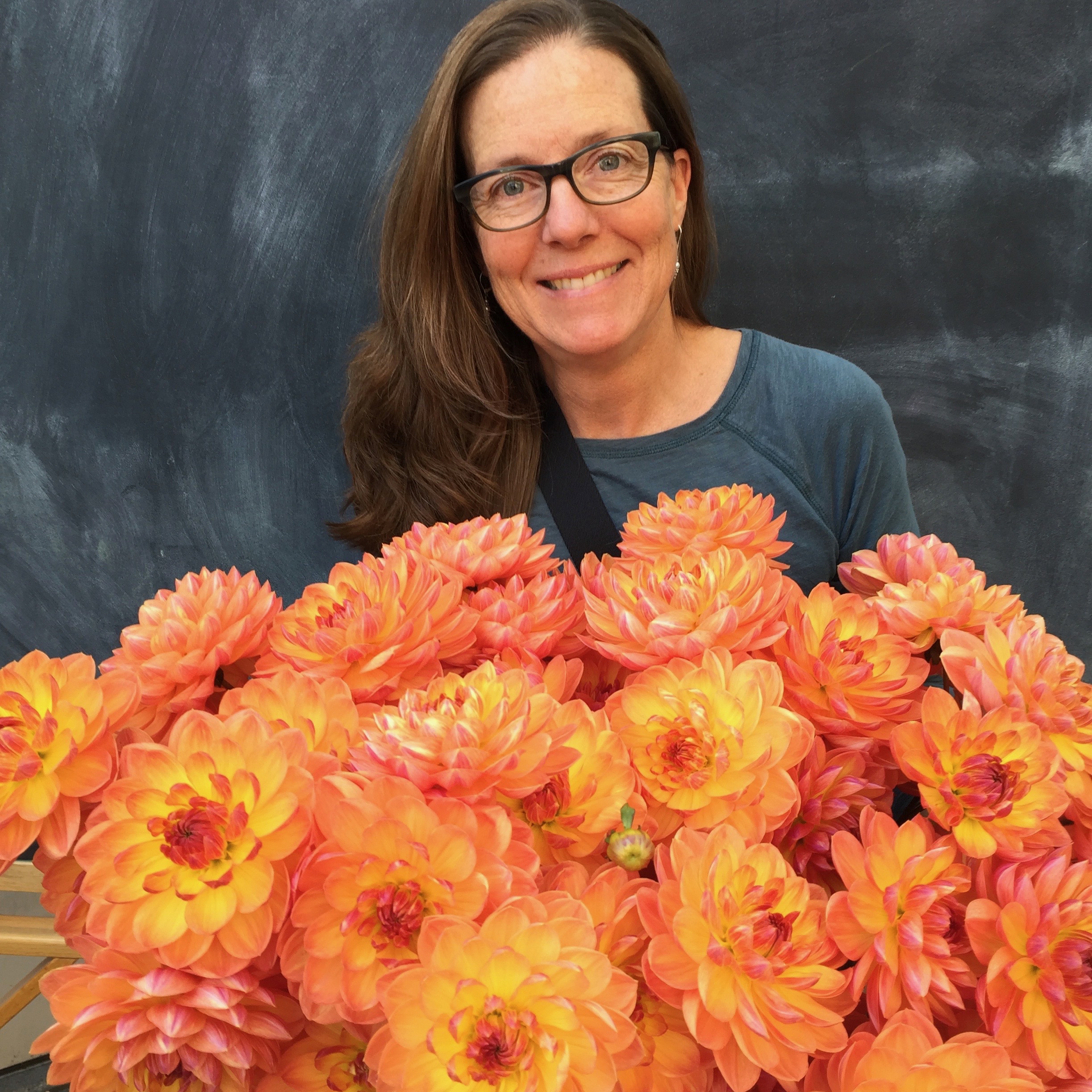
Kristine with a big bunch of Pam Howdens
For 13 years, I served as the President of the Monterey Bay Dahlia Society. It’s a group of about 60 dahlia growers on the Central Coast of California. As President, I was tasked with lining up speakers for our meetings. We are fortunate to have a well-known dahlia expert 40 miles away at Stanford University. Dr. Virginia Walbot is a biology professor specializing in corn genetics. She also maintains a dahlia garden at the University and uses dahlias, with their diverse forms and colors, to teach undergraduates about inheritance and plant genetics. Over the years, she and her students have done experiments with dahlias. I had heard that Dr. Walbot had a presentation on the science of flower color. In 2016, I invited her to one of our meetings to present her talk to our society.
Our group is typically pretty chatty. Members of the society have known each other for a long time, and our meetings were partially about socializing and catching up. The room grew quiet however once the lights went down and Dr. Walbot started speaking. With each progressive slide, our members became increasingly engrossed in the genetics of the pathways that produce color in dahlia blooms. As her presentation ended, she had a final slide, her dream slide. It expressed her desire that someday the dahlia genome would be sequenced. She explained that the only sequenced flower genomes were those that have significant commercial value, like roses and sunflowers. While dahlias have a lot of enthusiastic growers, there are no significant commercial interests that would foot the sizable bill for sequencing. She included the dream slide at the end of her presentation, hoping that perhaps someone in the audience would agree to fundraise for the sizable cost of genome sequencing.
That slide took me down a path that I am still on today…continue reading.
